Collective Molecular Activities of the Plant: Eupatorium Glutinosum
Plant ID: NPO5650
Plant Latin Name: Eupatorium Glutinosum
Taxonomy Genus: Eupatorium
Taxonomy Family: Asteraceae
Plant External Links:
NCBI TaxonomyDB:
n.a.
Plant-of-the-World-Online:
n.a.
Overview of Ingredients
29 All known Ingredients in Total
Unique ingredients have been isolated from this plant.Plant-Ingredients Associations were manually curated from publications or collected from other databases.
3 Ingredients with Acceptable Bioavailablity
Unique ingredients exhibit acceptable human oral bioavailablity, according to the criteria of SwissADME [PMID: 28256516] and HobPre [PMID: 34991690]. The criteria details:SwissADME: six descriptors are used by SwissADME to evaluate the oral bioavailability of a natural product:
☑ LIPO(Lipophility): -0.7 < XLOGP3 < +5.0
☑ SIZE: 150g/mol < MW < 500g/mol
☑ POLAR(Polarity): 20Ų < TPSA < 130Ų
☑ INSOLU(Insolubility): -6 < Log S (ESOL) < 0
☑ INSATU(Insaturation): 0.25 < Fraction Csp3 < 1
☑ FLEX(Flexibility): 0 < Num. rotatable bonds < 9
If 6 descriptors of a natural plant satisfy the above rules, it will be labeled high HOB.
HobPre: A natural plant ingredient with HobPre score >0.5 is labeled high human oral availability (HOB)
8 Ingredients with experimental-derived Activity
Unique ingredients have activity data available.Ingredient Structrual Cards
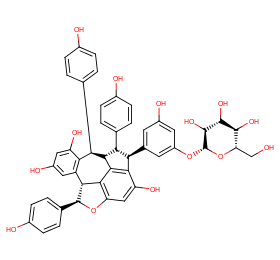
Ingredient ID: NPC96015
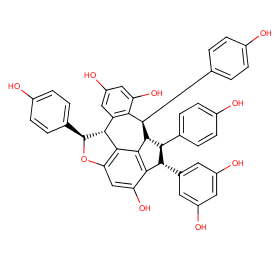
Ingredient ID: NPC67812
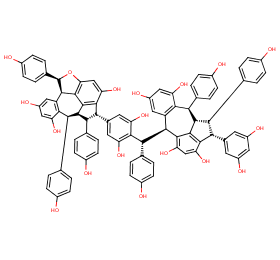
Ingredient ID: NPC56988
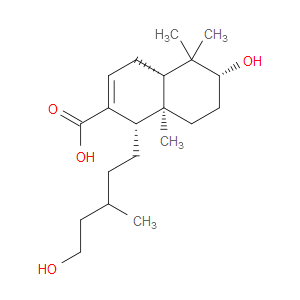
Ingredient ID: NPC482136
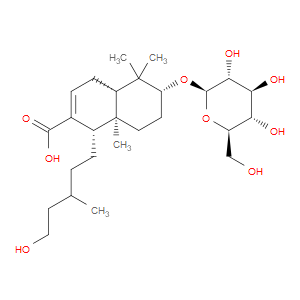
Ingredient ID: NPC482135
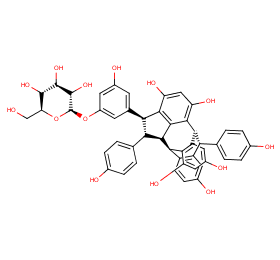
Ingredient ID: NPC34833
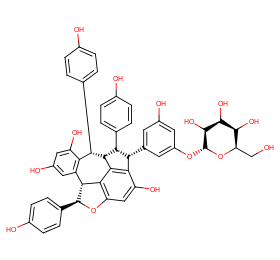
Ingredient ID: NPC3355
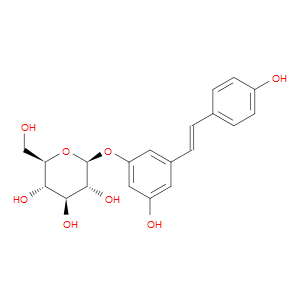
Ingredient ID: NPC303422
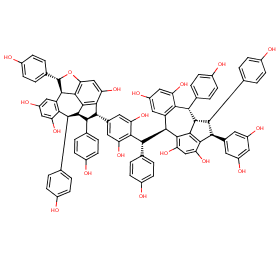
Ingredient ID: NPC302456
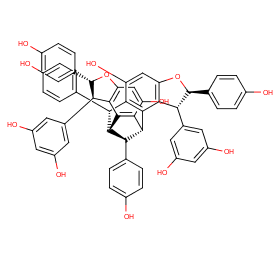
Ingredient ID: NPC287881
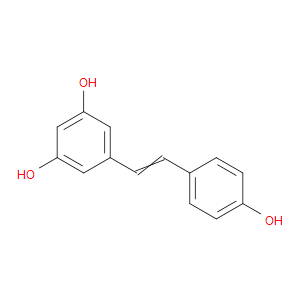
Ingredient ID: NPC275053

Ingredient ID: NPC254560
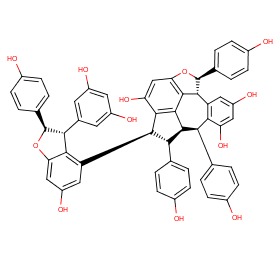
Ingredient ID: NPC224528
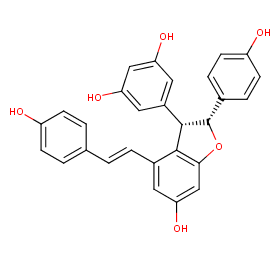
Ingredient ID: NPC201170
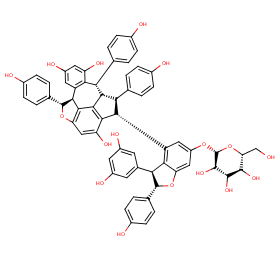
Ingredient ID: NPC197561
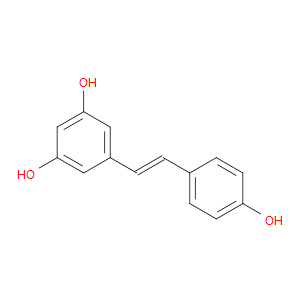
Ingredient ID: NPC161571
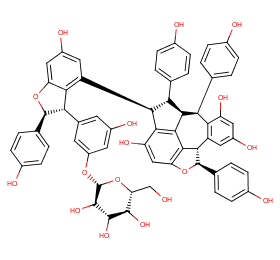
Ingredient ID: NPC15920
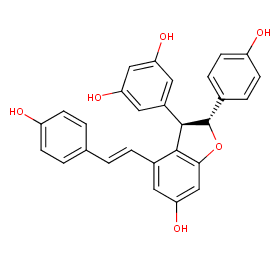
Ingredient ID: NPC15109
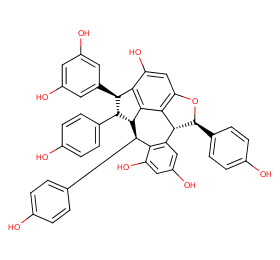
Ingredient ID: NPC148516
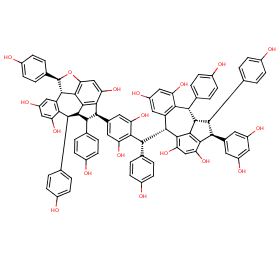
Ingredient ID: NPC147063
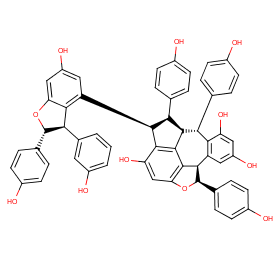
Ingredient ID: NPC144785

Ingredient ID: NPC143226
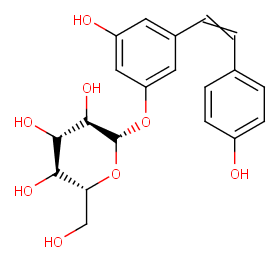
Ingredient ID: NPC142153
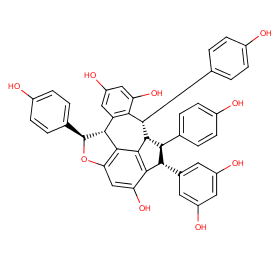
Ingredient ID: NPC141647
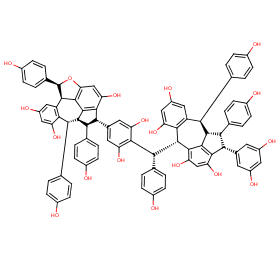
Ingredient ID: NPC13900
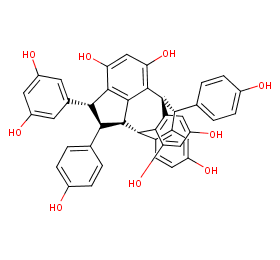
Ingredient ID: NPC129391
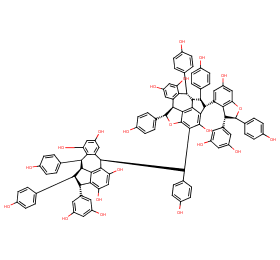
Ingredient ID: NPC106083
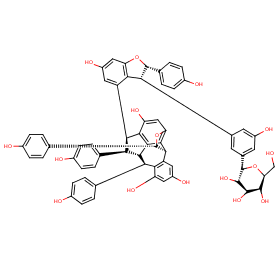
Ingredient ID: NPC103795
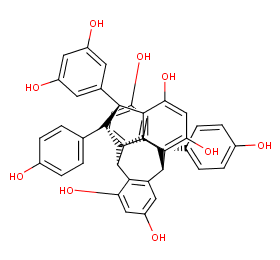
Ingredient ID: NPC103608
Classification of Human Proteins Collectively Targeted by the Plant
Detailed Information of Target Proteins
| Target Type | Protein Class | Gene ID | Protein Name | Uniprot ID | Target ChEMBL ID |
|---|---|---|---|---|---|
| Cytochrome P450 | Cytochrome P450 family 3 | CYP3A4 | Cytochrome P450 3A4 | P08684 | CHEMBL340 |
| Therapeutic Target | Lyase | CA14 | Carbonic anhydrase XIV | Q9ULX7 | CHEMBL3510 |
| Therapeutic Target | Lyase | CA9 | Carbonic anhydrase IX | Q16790 | CHEMBL3594 |
| Therapeutic Target | Lyase | CA12 | Carbonic anhydrase XII | O43570 | CHEMBL3242 |
| Therapeutic Target | Nuclear hormone receptor subfamily 3 | ESR1 | Estrogen receptor alpha | P03372 | CHEMBL206 |
| Therapeutic Target | Oxidoreductase | PTGS2 | Cyclooxygenase-2 | P35354 | CHEMBL230 |
| Therapeutic Target | Oxidoreductase | NQO2 | Quinone reductase 2 | P16083 | CHEMBL3959 |
| Therapeutic Target | Serine protease | DPP4 | Dipeptidyl peptidase IV | P27487 | CHEMBL284 |
| Therapeutic Target | Transferase | PIK3CB | PI3-kinase p110-beta subunit | P42338 | CHEMBL3145 |
| Therapeutic Target | Transferase | PIK3CA | PI3-kinase p110-alpha subunit | P42336 | CHEMBL4005 |
Clinical trials associated with plant from natural product (NP) & plant level:
| Clinical trials type | Number of clinical trials | |
|---|---|---|
| 45 | ||
| NCT ID | Title | Condition | Form in clinical use | Associated by plant or compound |
|---|---|---|---|---|
| NCT00098969 | UMCC 2003-064 Resveratrol in Preventing Cancer in Healthy Participants | neoplasm | Resveratrol (NPC161571) | |
| NCT00256334 | Resveratrol for Patients With Colon Cancer | malignant colon neoplasm | Resveratrol (NPC161571) | |
| NCT00433576 | Resveratrol in Treating Patients With Colorectal Cancer That Can Be Removed By Surgery | colorectal adenocarcinoma;malignant colon neoplasm;rectum cancer | Resveratrol (NPC161571) | |
| NCT00455416 | Dietary Intervention in Follicular Lymphoma | follicular lymphoma | Resveratrol (NPC161571) | |
| NCT00654667 | Mechanisms of Metabolic Regulation of Resveratrol on Humans With Metabolic Syndrome | insulin resistance | Resveratrol (NPC161571) | |
| NCT01126229 | Resveratrol for Improved Performance in the Elderly | memory impairment | Resveratrol (NPC161571) | |
| NCT01321151 | Use of Resveratrol to Decrease Acute Secondary Brain Injury Following Sports-Related Concussions in Boxers | concussion | Resveratrol (NPC161571) | |
| NCT01339884 | A Study of Resveratrol as Treatment for Friedreich Ataxia | Friedreich ataxia | Resveratrol (NPC161571) | |
| NCT01492114 | Anti-inflammatory and Antioxidant Effects of Resveratrol on Healthy Adults. | inflammation | Resveratrol (NPC161571) | |
| NCT01504854 | Resveratrol for Alzheimer's Disease | Alzheimer disease | Resveratrol (NPC161571) |
❱❱❱ Associated Human Diseases and Detailed Association Evidence
How do we define the Plant-Targeted Human Disease Association?
Associated human diseases of an individual plant are summurized based on FOUR types of association evidence, these include:
❶ Association by Therapeutic Target: Bioactive protein targets of the plant were defined in "Molecular Targets" section, target-disease associations collected from TTD database were subsequently used to build the associations between the plant and its targeted human diseases.
❷ Association by Disease Gene Reversion: Plant and a specific disease will be associated when >= 1 plant target gene overlaped with disease's DEGs.
❸ Association by Clinical Trials of Plant: Plant and a specific disease will be associated when >= 1 clinical trial (the plant is the intervetion) can be matched in ClinicalTrials.gov database.
❹ Association by Clinical Trials of Plant Ingredients: Plant and a specific disease will be associated when >= 1 clinical trial (the plant ingredient is the intervetion) can be matched in ClinicalTrials.gov database.
Associated Disease of the Plant | Association Type & Detailed Evidence |
|---|---|
Acne vulgarisDisease Category: 14.Diseases of the skinDisease ICD-11 Code: ED80 |
ESR1
|
Acquired prion diseaseDisease Category: 08.Diseases of the nervous systemDisease ICD-11 Code: 8E01 |
ESR1
|
Acute diabete complicationDisease Category: 05.Endocrine, nutritional or metabolic diseasesDisease ICD-11 Code: 5A2Y |
DPP4
|
Adenocarcinoma of bronchus or lungDisease Category: 02.NeoplasmsDisease ICD-11 Code: 2C25.0 |
CA12,CA9,TRPA1
|
Adenocarcinoma of pancreasDisease Category: 02.NeoplasmsDisease ICD-11 Code: 2C10.0 |
CYP1B1,CA9,PTGS1,TRPA1,DPP4,CA14,PTGS2,LMNA
|
Adrenal cancerDisease Category: 02.NeoplasmsDisease ICD-11 Code: 2D11 |
ESR1
|
Age-associated cognitive declineDisease Category: 21.Symptoms, signs or clinical findings, not elsewhere classifiedDisease ICD-11 Code: MB21.0 |
NCT01126229
|
Ageing associated decline in intrinsic capacityDisease Category: 21.Symptoms, signs or clinical findings, not elsewhere classifiedDisease ICD-11 Code: MG2A |
NCT02523274
|
Alzheimer diseaseDisease Category: 08.Diseases of the nervous systemDisease ICD-11 Code: 8A20 |
PTGS1,PTGS2
NCT01504854 |
AnxietyDisease Category: 21.Symptoms, signs or clinical findings, not elsewhere classifiedDisease ICD-11 Code: MB24.3 |
CYP3A4
|

